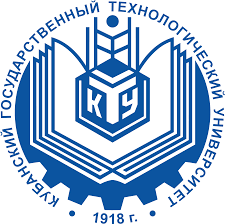
VII Съезд биофизиков России
Краснодар, Россия
17-23 апреля 2023 г.
17-23 апреля 2023 г.


|
VII Съезд биофизиков России
Краснодар, Россия
17-23 апреля 2023 г. |
 |
Программа СъездаСекции и тезисы:
Медицинская биофизика. НейробиофизикаВлияние полиморфизма гена 8-оксигуанин-днк-гликозилазы hogg1 на чувствительность периферической крови доноров к действию электромагнитного поляЕ.Е. Текуцкая1* 1.ФГБОУ ВО "Кубанский государственный университет"; * tekytska(at)mail.ru Наиболее распространенным продуктом окислительного повреждения ДНК в условиях окислительного стресса (ОС) является 8-оксо-7,8-дигидрогуанин (8-oxoG) который является основным биомаркером конформационных перестроек генома – показателем его дестабилизации [1]. По данным ESCODD (European Standards Committee on Oxidative DNA Damage) уровень эндогенного 8-oxoG в ДНК составляет около 1 8-oxoG на 106G. При генотоксическом стрессе этот показатель может увеличиваться в несколько раз [1]. Появление 8-oxoG в наследственном материале клетки свидетельствует о дестабилизации генома в результате ОС организма или отдельных его тканей и клеток. При эксцизионной репарации поврежденные участки вырезаются из цепи ДНК, затем образовавшиеся бреши заполняются неповрежденным материалом. У человека выделено и описано 11 гликозилаз. Это 8-оксогуаниин-ДНК-гликозилазы (OGG1, КФ 3.2.2.23), которые удаляют 8-ОН-гуанин, оставляя после себя однонитевый разрыв [2]. Накапливаясь в биологических жидкостях, 8-oxoG служит одним из лучших биомаркеров генотоксического ОС при различных патофизиологических состояниях, как это показано нами ранее [3].
Для исследования влияния чувствительности генов к действию низкочастотного электромагнитного поля (НЧ ЭМП) был проведен анализ полиморфизма гена 8-оксогуаниин-ДНК-гликозилазы hOGG1 у здоровых лиц. Полиморфизм гена hOGG1 оценивали в сыворотке крови в выборке из 18 условно здоровых доноров (мужчины 20 - 25 лет, некурящие). Кровь собирали в пластиковые пробирки объемом 2,5 мл с добавлением в качестве антикоагулянта ЭДТА в конечной концентрации 2,0 мг/мл. При изучении полиморфных вариантов rs1052133 гена hOGG1 использовали готовый коммерческий набор, разработанный ООО «Синтол». Реакционную смесь для определения полиморфизма Pro332Ala гена 8-oxoguanin DNA glycosylase OGG1 готовили согласно протоколу. После завершения амплификации анализировали результаты исследования с помощью программного обеспечения Rotor-Gene Q, установив значение пороговой линии 0,1 и выделив области соответствующих генотипов (Define Genotype, Wild Type, Heterozygous, Mutant). При интерпретации результатов проводили учитывали фланкирующую последовательность, частоту минорного аллеля G принимали равным 30,21 %, что соответствовало 1000 Genomes. Результаты ПЦР образцов сыворотки крови доноров, проведенные с помощью генотипирования и анализа распределения показали, что у здоровых доноров наблюдается в основном гомозиготный генотип С/С гена hOGG1, но наряду с этим присутствуют гетерозиготный С/G- и гомозиготный по аллелю G/G генотипы. По результатам ПЦР-анализа доноры были разделены на две группы: имеющие С/С генотип hOGG1 (11 человек) – 1 группа и С/G- и G/G генотипы (7 человек) – 2 группа. Для определения устойчивости геномного материла к окислительной модификации в условиях оксидативной нагрузки образцы цельной крови доноров двух групп обрабатывали ЭМП с частотами 3, 30 и 50 Гц согласно методике, изложенной в [3]. Степень окислительного повреждения ДНК оценивали по уровню концентрации 8-oxoG в сыворотке крови, содержание которого определяли методом, описанным в [3]. Обработка образцов крови доноров ЭМП частотами 3 и 30 Гц приводила к достоверно большему содержанию окислительных повреждений 8-oxoG в ДНК сыворотки крови доноров второй группы по сравнению с первой. Исходный уровень в контрольных образцах без воздействия ЭМП составлял 7,4 нг/мл для 1-й группы и 6,3 нг/мл для 2-й группы. При воздействии ЭМП частотой 3 Гц содержание 8-oxoG достоверно увеличивалось, достигая 14,8 нг/мл и 25 нг/мл соответственно. Это свидетельствует о максимальной подверженности к окислительной модификации ДНК при воздействии ЭМП в условиях нормально функционирующей системы антиоксидантной защиты. Таким образом, к воздействию низкочастотным ЭМП более чувствительны доноры с С/G- и G/G- полиморфизмом гена 8-oxoguanin DNA glycosylase OGG1, в то время как доноры с С/С-полиморфизмом hOGG1 гораздо менее восприимчивы к ЭМП, о чем свидетельствует повышенное содержание 8-oxoG в сыворотке крови доноров второй группы по сравнению с первой после обработки образцов их крови in vitro ЭМП. 1. Попов А.В., Юдкина А.В., Воробьев Ю.Н., Жарков Д.О. Каталитически компетентные конформации активного центра 8-оксогуанин-ДНК-гликозилазы человека // Биохимия. – 2020. – Т. 85, вып 2. – С. 225-238 DOI: 10.31857/S0320972520020062 2. Dizdaroglu M. Oxidatively induced DNA damage: Mechanisms, repair and disease // Cancer Letter. 2012. V. 327. P. 26 – 47 3. Текуцкая Е.Е., Барышев М.Г., Гусарук Л.Р., Ильченко Г.П. Окислительные повреждения ДНК при действии переменного магнитного поля // Биофизика, 2020. Т.65, №.4, С.664-669 DOI: 10.31857/S0006302920040055 Influence of the 8-oxyguanine-dna-glycosylase hogg1 gene polymorphism on the sensitivity of donor peripheral blood to the action of electromagnetic fieldE.E. Tekutskaya1* 1.Kuban State University; * tekytska(at)mail.ru The most common product of DNA oxidative damage under conditions of oxidative stress (OS) is 8-oxo-7,8-dihydroguanine (8-oxoG), which is the main biomarker of genome conformational rearrangements, an indicator of its destabilization [1]. According to ESCODD (European Standards Committee on Oxidative DNA Damage), the level of endogenous 8-oxoG in DNA is about 1 8-oxoG per 106G. Under genotoxic stress, this indicator can increase several times [1]. The appearance of 8-oxoG in the hereditary material of the cell indicates the destabilization of the genome as a result of the OS of the organism or its individual tissues and cells. During excisional repair, damaged areas are cut out of the DNA strand, then the resulting gaps are filled with intact material. In humans, 11 glycosylases have been isolated and described. These are 8-oxoguanine-DNA-glycosylases (OGG1, EC 3.2.2.23), which remove 8-OH-guanine, leaving behind a single-strand break [2]. Accumulating in biological fluids, 8-oxoG is one of the best biomarkers of genotoxic OS in various pathophysiological conditions, as we have shown previously [3].
To study the effect of gene sensitivity to the action of a low-frequency electromagnetic field (LF EMF), we analyzed the polymorphism of the 8-oxoguanine-DNA-glycosylase hOGG1 gene in healthy individuals. The polymorphism of the hOGG1 gene was assessed in blood serum in a sample of 18 apparently healthy donors (men aged 20–25, non-smokers). Blood was collected in 2.5 ml plastic tubes with the addition of EDTA as an anticoagulant at a final concentration of 2.0 mg/ml. When studying the rs1052133 polymorphic variants of the hOGG1 gene, a ready-made commercial kit developed by Sintol LLC was used. The reaction mixture for determining the Pro332Ala polymorphism of the 8-oxoguanin DNA glycosylase OGG1 gene was prepared according to the protocol. After completion of the amplification, the results of the study were analyzed using the Rotor-Gene Q software, setting the threshold line to 0.1 and highlighting the areas of the corresponding genotypes (Define Genotype, Wild Type, Heterozygous, Mutant). When interpreting the results, the flanking sequence was taken into account, the frequency of the minor allele G was taken equal to 30.21%, which corresponded to 1000 Genomes. The results of PCR of blood serum samples of donors, carried out using genotyping and distribution analysis, showed that in healthy donors, there is mainly a homozygous C/C genotype of the hOGG1 gene, but along with this, there are heterozygous C/G- and homozygous for the G/G allele genotypes. According to the results of PCR analysis, donors were divided into two groups: those with C/C genotype hOGG1 (11 people) - group 1 and C/G- and G/G genotypes (7 people) - group 2. To determine the resistance of the genomic material to oxidative modification under conditions of oxidative stress, whole blood samples from donors of two groups were treated with EMF at frequencies of 3, 30, and 50 Hz according to the procedure described in [3]. The degree of oxidative damage to DNA was assessed by the level of 8-oxoG concentration in blood serum, the content of which was determined by the method described in [3]. Treatment of blood samples of donors with EMF at frequencies of 3 and 30 Hz led to a significantly higher content of oxidative damage 8-oxoG in the blood serum DNA of donors of the second group compared to the first. The initial level in control samples without exposure to EMF was 7.4 ng/ml for the 1st group and 6.3 ng/ml for the 2nd group. When exposed to EMF with a frequency of 3 Hz, the content of 8-oxoG significantly increased, reaching 14.8 ng/ml and 25 ng/ml, respectively. This indicates the maximum susceptibility to oxidative modification of DNA upon exposure to EMF under conditions of a normally functioning antioxidant defense system. Thus, donors with C/G- and G/G-polymorphism of the 8-oxoguanin DNA glycosylase OGG1 gene are more sensitive to the effects of low-frequency EMF, while donors with C/C polymorphism hOGG1 are much less susceptible to EMT, as evidenced by elevated levels of 8-oxoG in the blood serum of donors of the second group compared to the first after treatment of their blood samples in vitro with EMF. 1. Popov A.V., Yudkina A.V., Vorobyov Yu.N., Zharkov D.O. Catalytically competent conformations of the active site of human 8-oxoguanine-DNA-glycosylase // Biochemistry. - 2020. - T. 85, issue 2. - P. 225-238 DOI: 10.31857 / S0320972520020062 2. Dizdaroglu M. Oxidatively induced DNA damage: Mechanisms, repair and disease // Cancer Letter. 2012. V. 327. P. 26 – 47 3. Tekutskaya E.E., Baryshev M.G., Gusaruk L.R., Ilchenko G.P. Oxidative damage to DNA under the action of an alternating magnetic field // Biophysics, 2020. V.65, no.4, P.664-669 DOI: 10.31857/S0006302920040055 Докладчик: Текуцкая Е.Е. 215 2022-12-29
|